Net fishing in Alexandria
One of the great pleasures Alexandria has to offer is a morning walk on the Corniche. You can wander up and down, people-watching to your heart’s content, despite the constant flow of noisy traffic on the six-lane highway separating the seaside walkway from the rest of Alexandria.
You almost always see people fishing with incredibly long poles (I estimate they’re about 15 feet). But this morning we got to see something completely new to us: a large group of men wielding a huge net, and dragging their catch in to shore.

We stopped to watch when we saw about six men pulling on a rope that led out to sea. We had no idea what they were doing until we noticed a curving line of little red floats beyond the rope. One of the men saw us watching, and called out to Alan. He gestured eastward, saying that there was another group working with them. Sure enough, as we looked up the beach, we spotted another group, also pulling a rope. That’s when we realized the small red floats were holding a big net, and that this net was being managed not only by the onshore rope pullers, but also by two men in a small boat, way out in the water.
The men below us were enjoying the attention as we took photos and Alan chatted back and forth with them. We moved up the beach to watch what the other group was doing, then realized the two groups were beginning to move slowly towards one another to close the net.
As the two groups of men drew closer, they traded places and crossed their ropes in the water, drawing the huge net into a noose shape. Two men who’d been on the shore began to strip down, and dived into the water. One of these swimmers grabbed a net we had casually noticed before – it was gathered together, its small floats bunched like a bouquet of red flowers. The swimmer dove below the surface, and brought the smaller net up inside the large net. The second swimmer spread the net across the near end of the big noose.

The two swimmers stayed parallel to each other, treading water, holding the shorter net in place, as the two groups of men onshore continued to pull the big net in, drawing it together. As they pulled it in, they neatly tied off the incoming net at intervals with pieces of rope, turning it into a long bunched ponytail with decorative red bobbles.
It was wonderful watching these men working so quickly and nimbly, in a sequence and rhythm I recognized must be ages old. This method of net fishing has probably been used since people have been able to make small light boats and strong nets. At one time, the floats would have been made of glass, rather than plastic, and the onshore fishermen would have been wearing traditional loose pants rather than jeans and t-shirts. But otherwise, their methods and movements have probably been the same for centuries.
We noticed that the two swimmers were beating their palms and hands on the surface of the water in a very deliberate way as the net closed in. My guess is that the splashing was to discourage fish from swimming between the edges of the large and small nets, to keep them inside the noose.
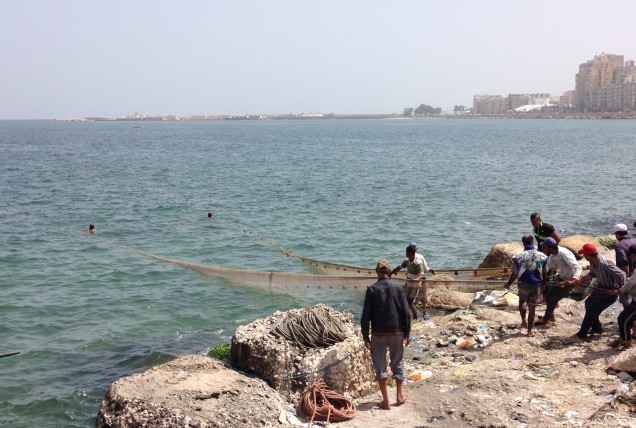
Finally, in one swift movement, the men pulled the entire remaining net out of the water, landing it on the narrow shore. It was exhilarating to see it land, after all that effort.
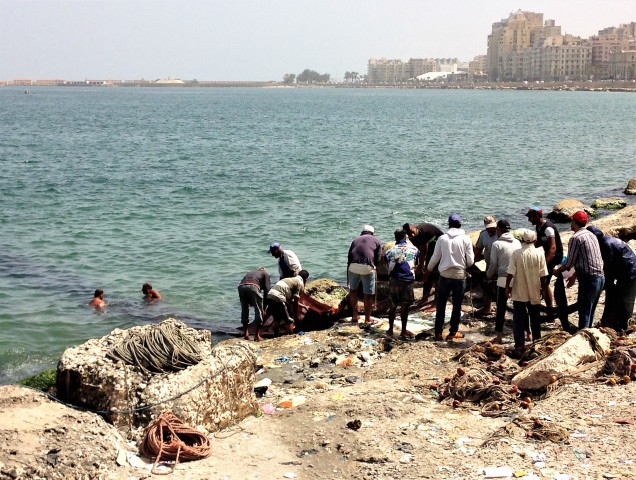
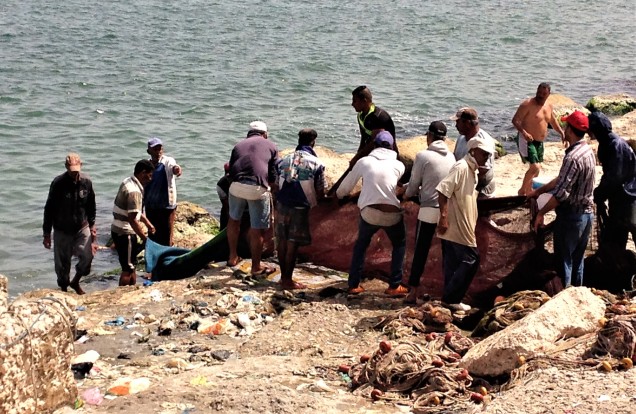
I noticed a kind of blue perforated plastic bag at the center of the collapsed net, heaving as if it were being punched all over from the inside. I caught my breath, feeling the desperation of the trapped fish; the exhilaration of just a moment before deflated as suddenly as a punctured balloon.
Part of me wanted to look away, but I really wanted to see how good the catch was. Big plastic tubs at the ready, the men opened the net. Swift hands reached into the flashing silver heap, and scooped out perhaps two dozen large flopping fish, possibly 15 inches long. I saw one of the two swimming net-holders receive a few of the big fish; he put them in a bag and began pulling on his clothes.
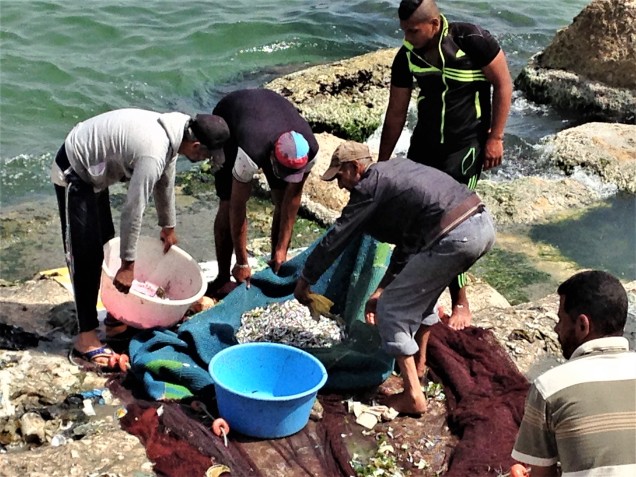
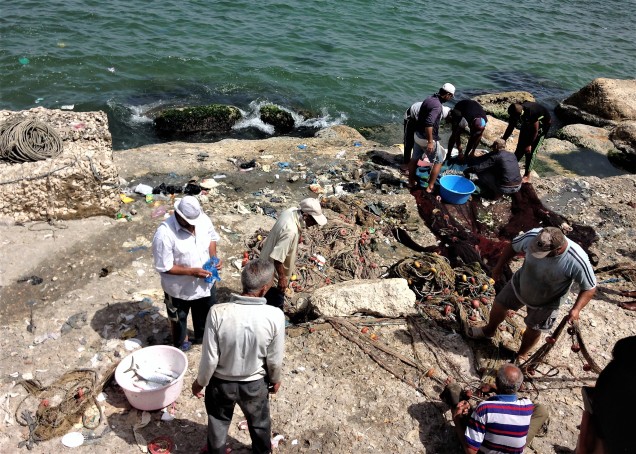
The rest of the catch was all small fish that looked to be about the length of my hand — that, and a lot of plastic bags and other garbage, which the men quickly flung to one side.
Both Alan and I were surprised by the size of the haul. It didn’t seem like a lot of food after all that effort; we’d been watching the men, at least a dozen of them, for more than half an hour.
I jumped up on the sea wall to get a few pictures of the men emptying the net and distributing the catch. Alan, who’s a lot taller than I am, did much better with his camera, and took some of the photos I’m sharing here.
Despite my vegetarian misgivings, I was fascinated by this whole process – the first time I’d seen anything like it. And we weren’t the only ones. By the time the net came in, there was quite a crowd there with us on the Corniche: well-dressed people enjoying their Friday holiday, with enough time to stop and watch something that’s both ordinary and miraculous.




No comments:
Post a Comment